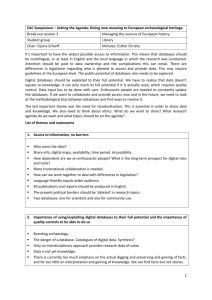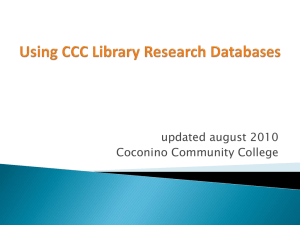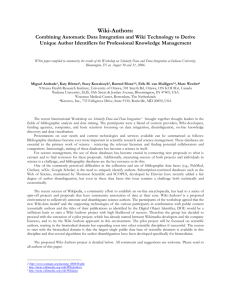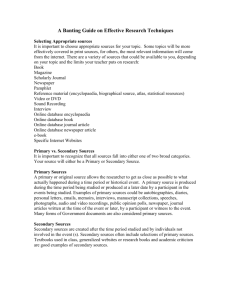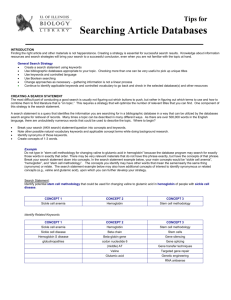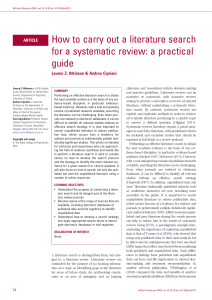Handout on Databases
advertisement
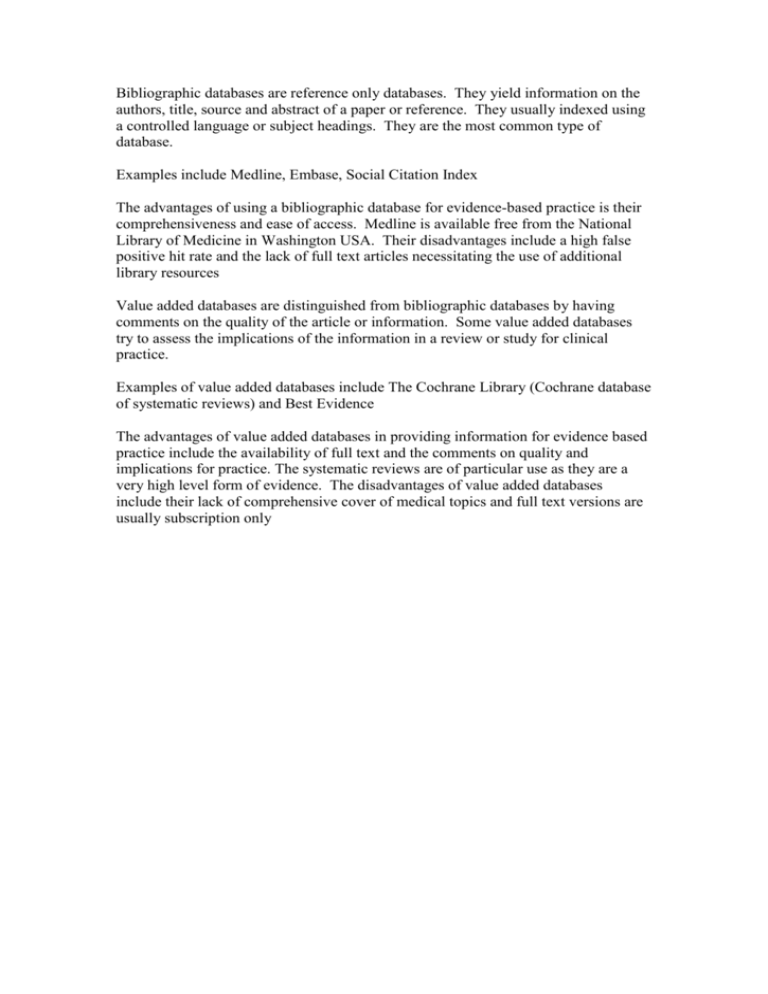
Bibliographic databases are reference only databases. They yield information on the authors, title, source and abstract of a paper or reference. They usually indexed using a controlled language or subject headings. They are the most common type of database. Examples include Medline, Embase, Social Citation Index The advantages of using a bibliographic database for evidence-based practice is their comprehensiveness and ease of access. Medline is available free from the National Library of Medicine in Washington USA. Their disadvantages include a high false positive hit rate and the lack of full text articles necessitating the use of additional library resources Value added databases are distinguished from bibliographic databases by having comments on the quality of the article or information. Some value added databases try to assess the implications of the information in a review or study for clinical practice. Examples of value added databases include The Cochrane Library (Cochrane database of systematic reviews) and Best Evidence The advantages of value added databases in providing information for evidence based practice include the availability of full text and the comments on quality and implications for practice. The systematic reviews are of particular use as they are a very high level form of evidence. The disadvantages of value added databases include their lack of comprehensive cover of medical topics and full text versions are usually subscription only









